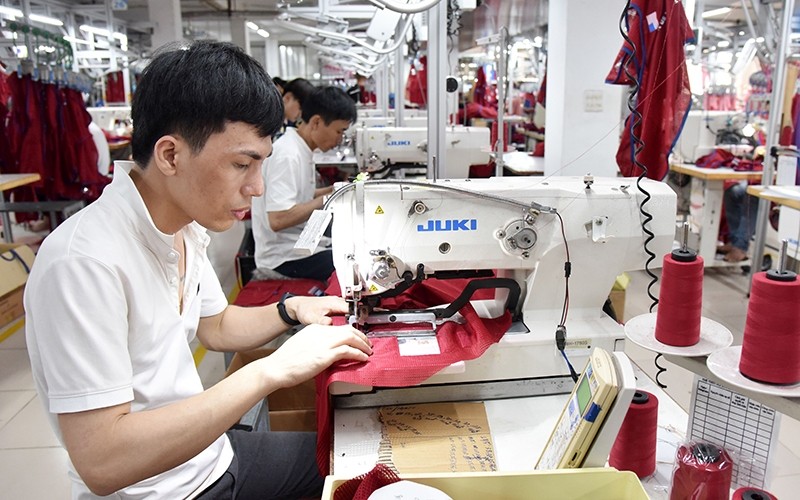Highest growth
In recent years, many important Free Trade Agreements (FTAs) have been established to create a positive foundation for the development of economic and trade cooperation between Vietnam and the Americas such as the US-Vietnam Bilateral Trade Agreement signed in 2000; the Vietnam - Chile Free Trade Agreement signed in 2011; the Free Trade Agreement between Vietnam and Cuba signed in 2018; the Comprehensive and Progressive Agreement for Trans-Pacific Partnership (CPTPP) signed in 2018 which came into effect in 2019, of which Canada, Mexico and Peru were the first 3 countries with FTAs with Vietnam.
Currently, the FTA with the Southern Common Market (Mercosur) is also being discussed regarding negotiating possibilities. In recent years, amongst their Vietnamese partners, the Americas have continuously been the region with the highest growth in trade turnover. According to Deputy Minister of Industry and Trade Do Thang Hai, the value of two-way trade between Vietnam and the Americas in the past ten years has increased 3.5 times over, from US$28 billion in 2011 to US$96.8 billion in 2019; of which, Vietnam's merchandise exports to the Americas reached US$73.6 billion and imports from the Americas reached more than US$23.2 billion. Entering 2020, despite the impacts of Covid-19 pandemic, in the first eight months of the year, two-way trade turnover between the two sides still reached US$69.3 billion, up 11.8 percent, of which, Vietnam's exports increased by 15.9 percent over the same period in 2019.
In particular, in the first year of implementation of the CPTPP, many Vietnamese businesses began to penetrate some new markets in the Americas, many of Vietnam's key products saw good growth in export turnover, such as textiles and garment exports to Canada in 2019 which itself increased by 21.9 percent over 2018; exports to Mexico increased by 19.4 percent and those to Peru increased by 24 percent. Vietnamese Commercial Counsellor in Canada Do Thi Thu Huong has stated that Vietnamese businesses have many opportunities to cooperate with Canadian businesses as in recent years, the Canadian government has pursued a policy of trade diversification. The US - China trade war is directly affecting the market strategy of some Canadian businesses and the Covid - 19 pandemic has shown the downsides of the supply chain, causing businesses to review and gain fresh demand in order to establish a new supply chain. Meanwhile, Vietnam and Canada are complementary economies, not in direct competition, especially in terms of agricultural products, food, and energy. Vietnamese businesses should actively seize opportunities to join the list of reliable suppliers in the market. Tran Toan Thang, Head of the Industrial and Business Economic Forecasting Department (National Centre for Socio-economic Information Forecast) said that in the context of Vietnam's export decline in many markets, exports to American markets are still the bright spot. This is an important factor in confirming the future potential of these markets.
Making further efforts
Although the Americas are a high potential market, Vietnamese enterprises’ path of entering the market has many obstacles. According to experts, geographical distance is the first difficulty because there is currently no direct flight from Vietnam to many American countries. Besides, language is also a big obstacle for Vietnamese businesses. In fact, it is very important to learn about customs, practices, business experiences, and commodities; it can be said to be vital to Vietnamese businesses. According to Deputy Minister Do Thang Hai, the American market currently loves Vietnamese food, beverages, and fruits. But our businesses are facing many difficulties in meeting conditions in these market such as quarantine, food safety, quality, habits and customs. Many businesses do not yet understand the regulations on imported goods, regulations on quality and food safety and the many specific rules of the American market. Therefore, in the near future, businesses should focus on thorough research to meet these standards.
Export turnover to the US accounted for nearly 90 percent of Vietnam's total exports to the continent. According to Commercial Counsellor of Vietnam in the US Bui Huy Son, despite the negative impact of COVID-19, spending in this market has increased gradually, a very important signal for businesses exporting goods. It can be said that the market, which imports more than US$2trillion worth of goods per year and is undergoing strong shifts in its supply chains to avoid too much dependence on one market, is createing large opportunities for Vietnamese firms to participate more strongly in the new supply chain.
In order to catch the new supply chain movement, businesses should have a long-term, quality and efficient vision, not simply "hunting" for current market opportunities to then sell off in a short time. Specifically, businesses should quickly adapt to the market's requirements in the new situation, always closely follow market movements and policies in order to promptly respond. Meanwhile, it is necessary to focus on perfecting products as well as promoting trade promotion, increasing exports through direct distribution channels or online. On the other hand, businesses also need to ensure product traceability; participate in investment and business cooperation with partners in the US as well as many other countries to improve the overall competitiveness of their products for export. And if the business have a high competitive capacity, the trend of changing the supply chain will always open up new opportunities not only associated with the US but also with many other markets and suppliers, especially the Central American and South American countries, where have huge potential.
















